Info
Subfamily: Panicoideae
Genus etymology: Urochloa = "tail grass" [Greek] refering to the small tail (mucro) of the upper lemma of some species
Species etymology: ramosa = "abundance of branches" [Latin] refering to the inflorescence
Photosynthetic type: C4 (warm season)
Nativity: naturalized - accidental
First recorded in Hawaiʻi: 2023
Map
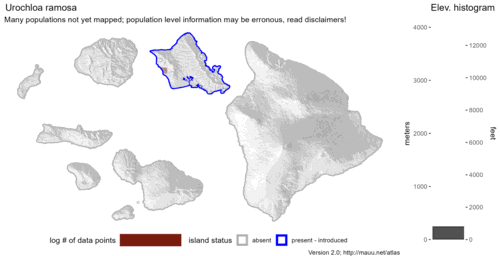
Inflorescence
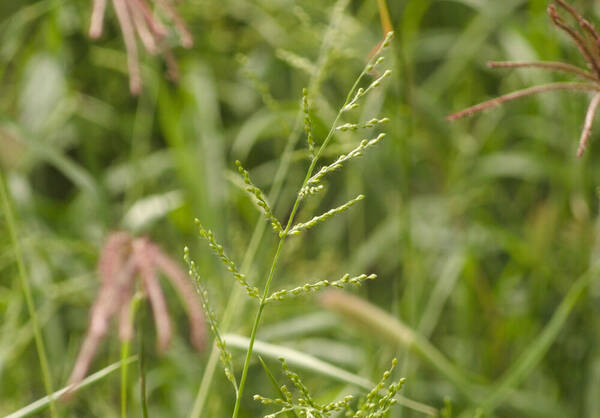
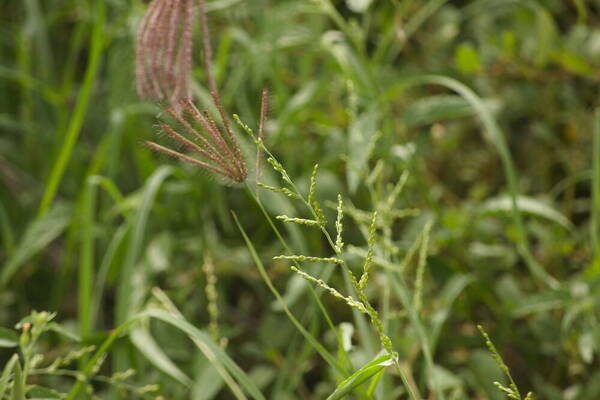
Plant
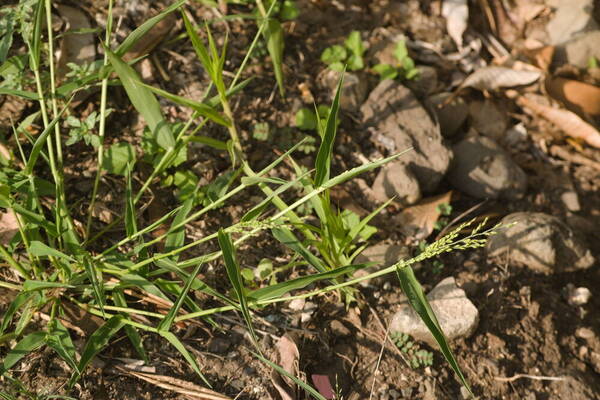
Habit
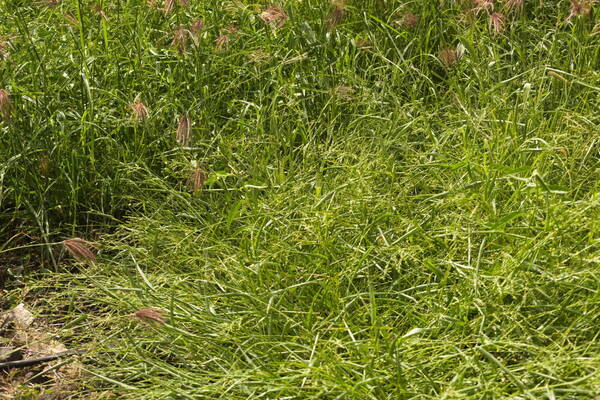
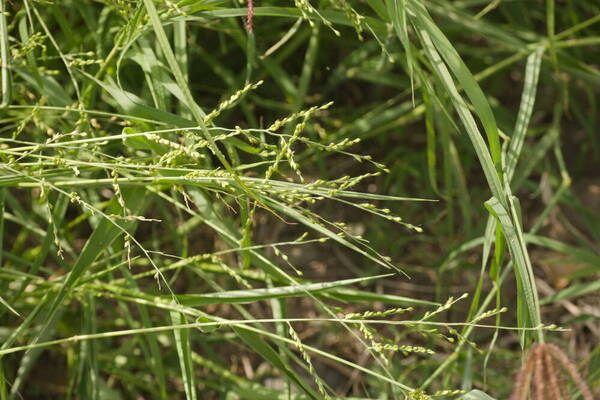
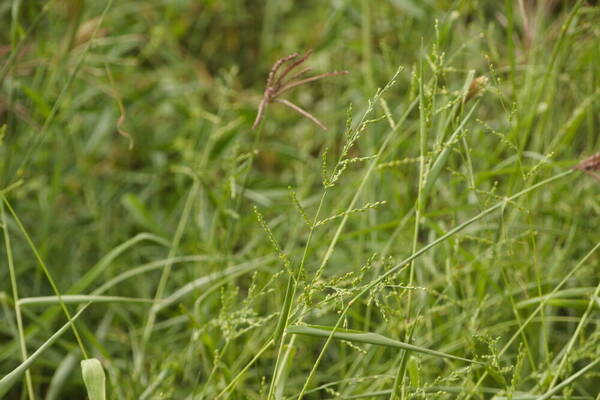
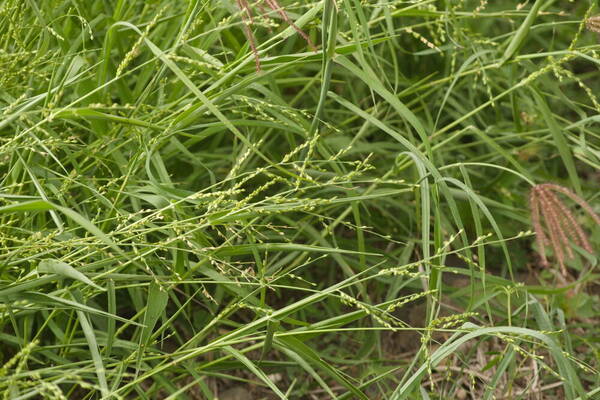
Spikelets
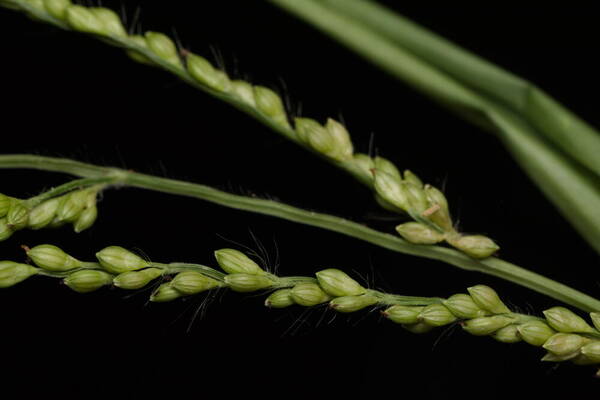
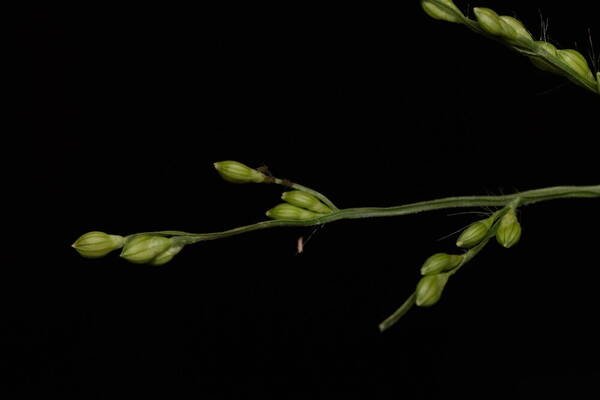
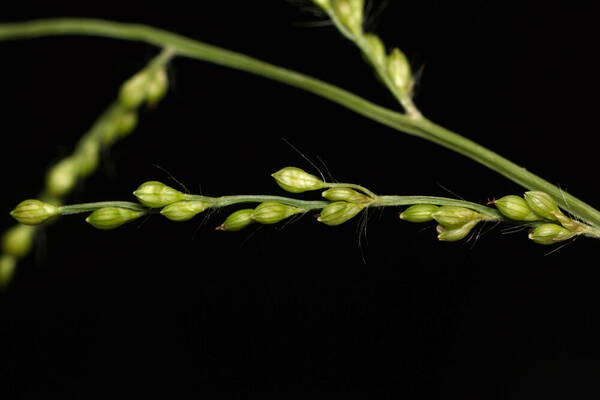
Description
Loosely tufted annual; culms 10–70 cm. high. Leaf-blades broadly linear, 2–25 cm. long, 4–14 mm. wide. Inflorescence of 3–15 racemes borne on an axis 3–10 cm. long; racemes 1–8 cm. long, simple or the longest with branchlets at the base, bearing mostly paired loosely contiguous spikelets appressed to the triquetrous rhachis; pedicels shorter than the spikelets, 1–2 mm. long. Spikelets elliptic to broadly elliptic, 2.5–3.5 mm. long, glabrous or pubescent, acute to cuspidate, with or without a stipe up to 0.5 mm. long; lower glume 1/3–1/2 the length of the spikelet; upper glume and lower lemma membranous, or rarely the latter coriaceous; upper lemma rugose, subacute to acute.
(Description source: Clayton, W.D. & Renvoize, S.A. 1982. Flora of Tropical East Africa. Gramineae (Part 3). A.A. Balkema, Rotterdam. 448 pp. )
Loosely tufted annual. Culms 10–70 cm. high. Inflorescence of 3–15 racemes, these 1–3 cm. long, simple or the longest with branchlets at the base, bearing mostly paired loosely contiguous spikelets appressed to a triquetrous rhachis; pedicels shorter than spikelets, 1–2 mm. long. Spikelets 2.5–3.5 mm. long, glabrous to pubescent, acute, with or without a short stipe up to 0.5 mm. long. Inferior glume 1/3–1/3 length of spikelet. Superior lemma rugose, subacute to acute.
(Description source: Launert, E. & Pope, G.V. (eds.). 1989. Flora Zambesiaca. Volume 10. Part 3. Kew, London. 152 pp. )
Plants annual; tufted. Culms 10–65 cm, decumbent, rooting or not at the lower nodes; nodes pubescent. Sheaths usually puberulous, sometimes glabrous or sparsely pilose, margins ciliate; ligules 0.8–1.7 mm; blades 2–25 cm long, 4–14 mm wide, glabrous, margins scabrous. Panicles 3–13 cm, simple, with 3–15 spikelike primary branches; primary branches 1–8 cm, divergent, axils glabrous, axes 0.4–0.6 mm wide, triquetrous, glabrous, scabrous, or pubescent, with or without some papillose-based hairs; secondary branches, if present, confined to the lower branches; pedicels shorter than the spikelets, scabrous or pubescent. Spikelets 2.5–3.4 mm long, 1.3–2 mm wide, ellipsoid, apices broadly acute to acute, paired, appressed to the branches. Glumes scarcely separated, rachilla internode between the glumes not pronounced; lower glumes 1–1.5 mm, 1/3 – 1/2 as long as the spikelets, glabrous, 3–5-veined; upper glumes 2.5–3.4 mm, usually puberulent, sometimes glabrous, margins sometimes somewhat pubescent, 7–9-veined, without evident cross venation; lower florets sterile, lower lemmas 2.4–3.3 mm, usually puberulent or occasionally glabrous, margins not ciliate, without cross venation, 5-veined; upper lemmas 2.3–3.3 mm, acute, mucronate; anthers 0.7–1.2 mm. Caryopses 1.2–2.3 mm; hila punctiform. 2n = 36 (usually); also 14, 28, 32, 42, 46, 72.
(Description source: Barkworth, M.E., Capels, K.M., Long, S. & Piep, M.B. (eds.) 2003. Flora of North America, north of Mexico. Volume 25. Magnoliophyta: Commelinidae (in part): Poaceae, Part 2. Oxford University Press, New York. 783 pp http://floranorthamerica.org/Urochloa_ramosa )